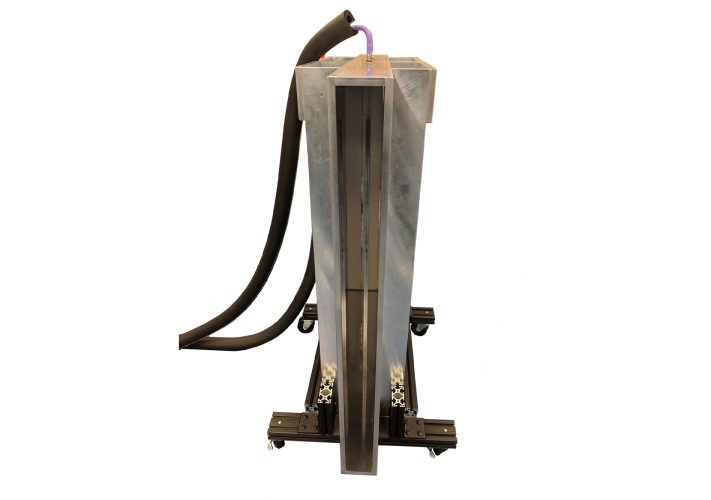Home » Products » Resonant Methods » Stripline Cavity
Stripline Cavity

The stripline cavity is a section of stripline waveguide that is shorted at both ends and therefore resonates at frequencies corresponding to half wavelength intervals of the cavity length. A small material specimen placed at one end of the cavity then causes the resonance to be perturbed from which the real and imaginary magnetic permeability of the specimen are calculated. The 150 MHz stripline cavity resonates at a series of frequencies starting at 150 MHz and provides sensitive measurement of thin 1.25″ x 1.25″ specimens.
Applications of the Stripline Cavity:
- The stripline cavity method provides a convenient way to characterize materials for applications such as co-site interference, EMI (electromagnetic interference) mitigation, and radar absorbing materials. Examples of how the Stripline Cavity Method is being used:
- Characterizing magnetic absorber materials and constituents.
- The 150 MHz cavity resonates at integral multiples of the base frequency up to 1.05 GHz, so can capture ferromagnetic resonance at VHF and UHF frequencies.
Benefits of the Stripline Cavity:
- Provides better sensitivity so that electrically-small specimens can still be accurately measured.
- Produces accurate real and imaginary magnetic permeability with relatively small (~1.25”) specimens, even at VHF and UHF frequencies.
Additional Information
- 150 MHz cavity is 36” wide by 40” tall stripline cavity fixture resonates at multiples of 150 MHz (150, 300, 450, 600, etc).
- Pocketed aluminum construction to minimize weight while maximizing stiffness and straightness.
- Extra-wide ground planes to minimize radiated losses & maximize cavity “Q”.
- Fed by two magnetic loop probes – one to excite the cavity and a second one to measure cavity response.
- Can accommodate up to 1.25” (31.75mm) specimens.
- User Manual.
- CTGcalc™ Software.

